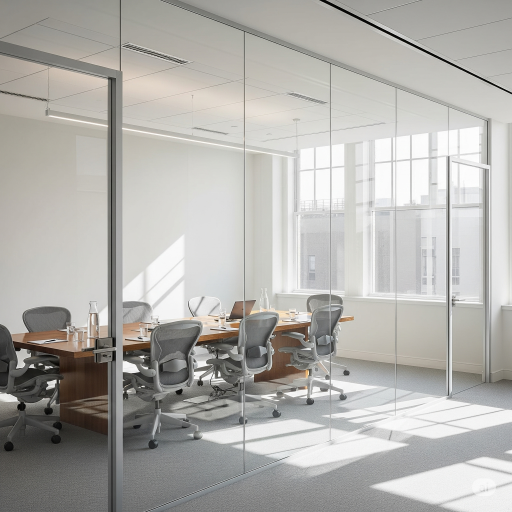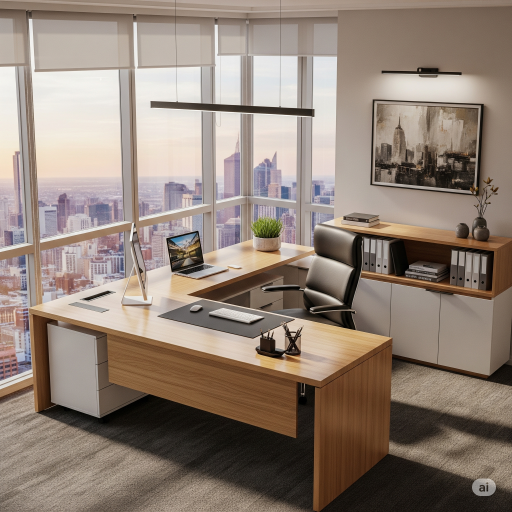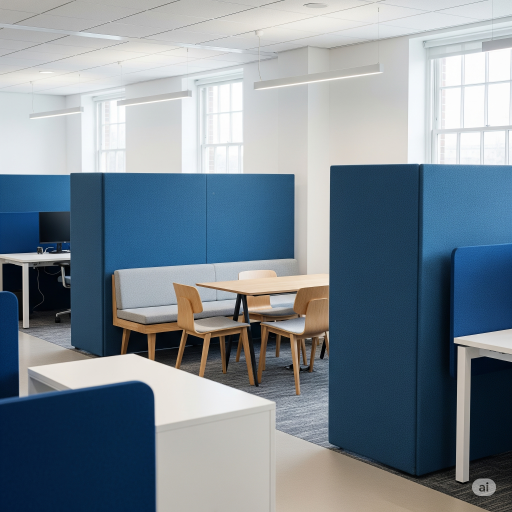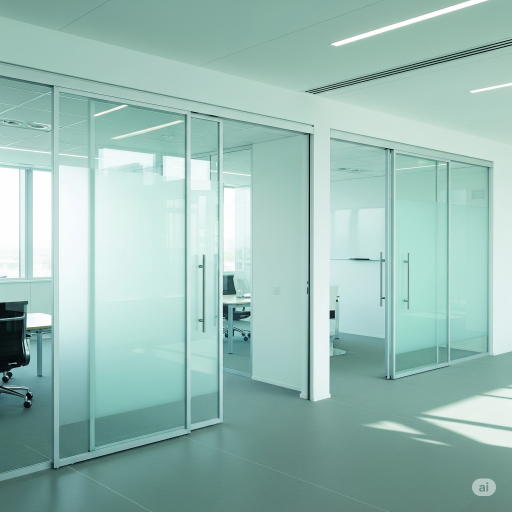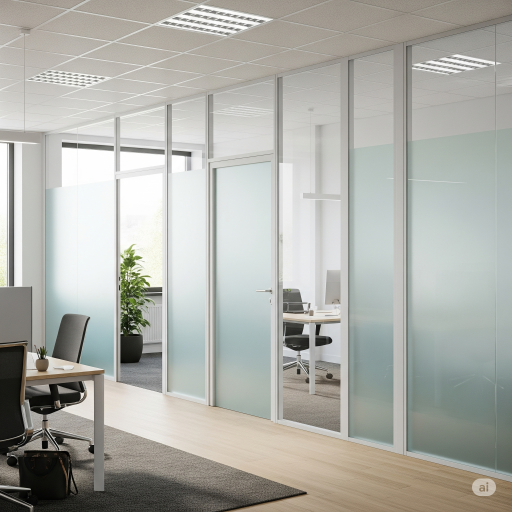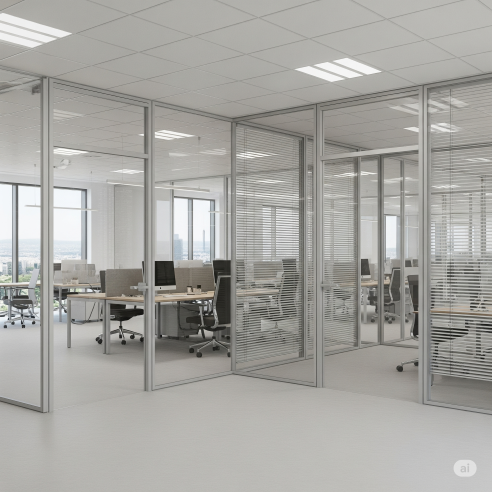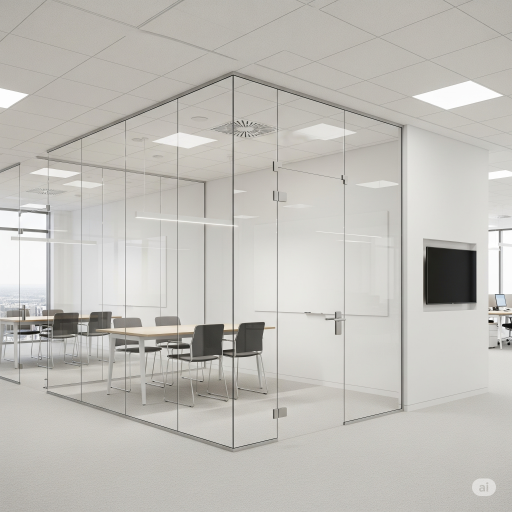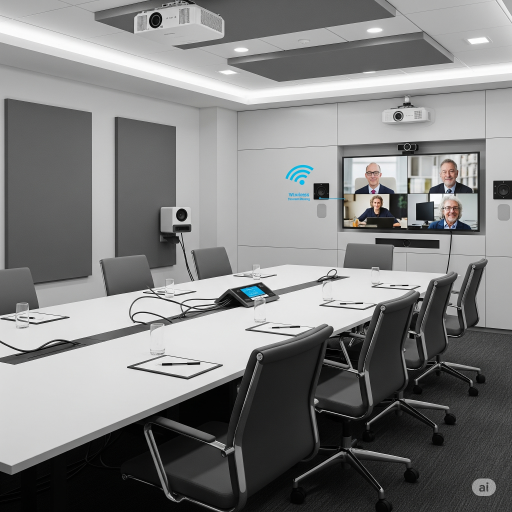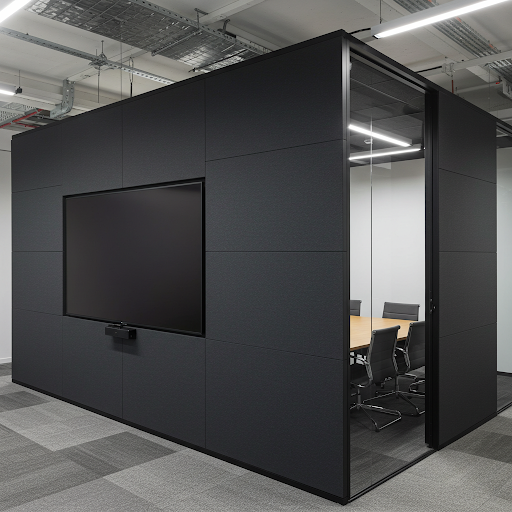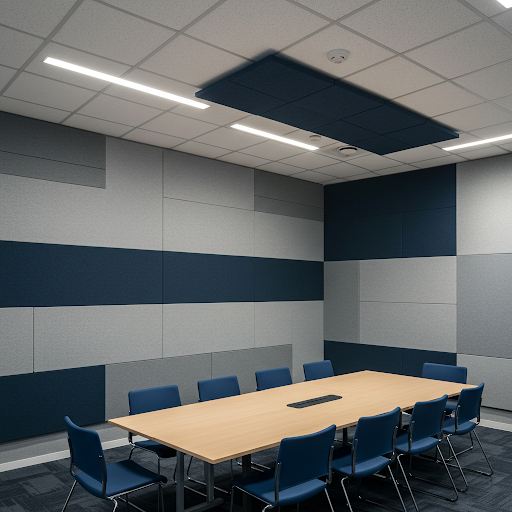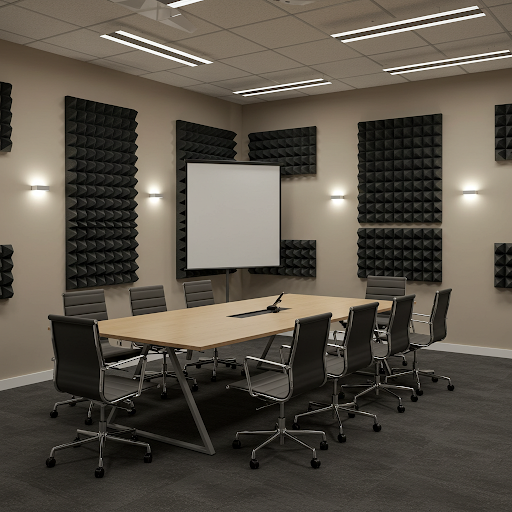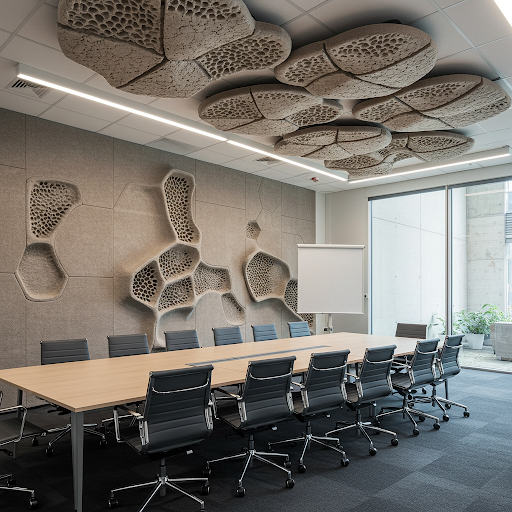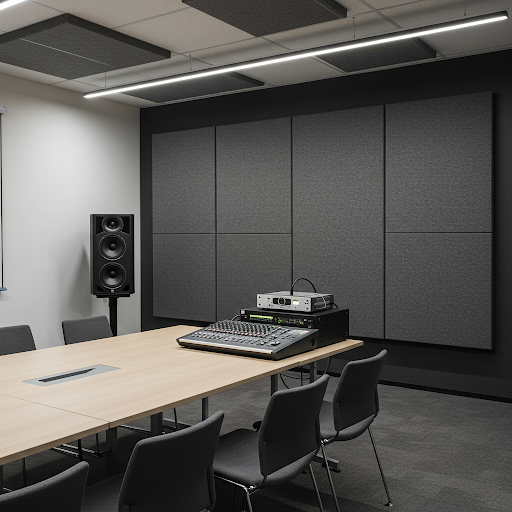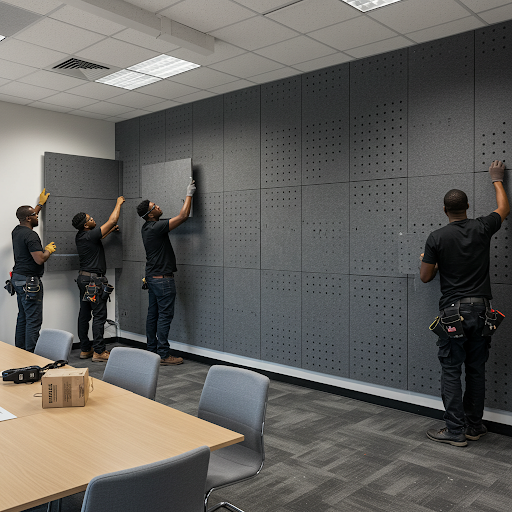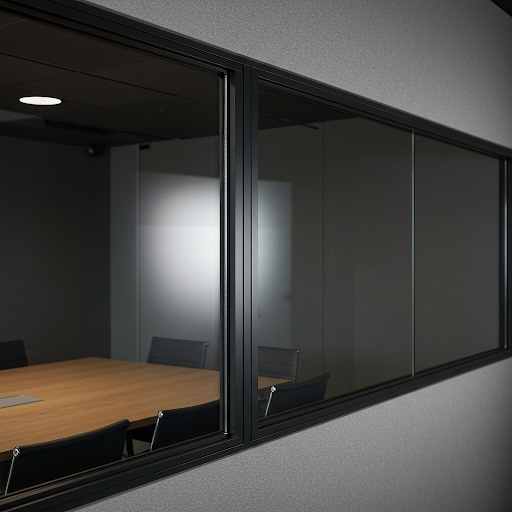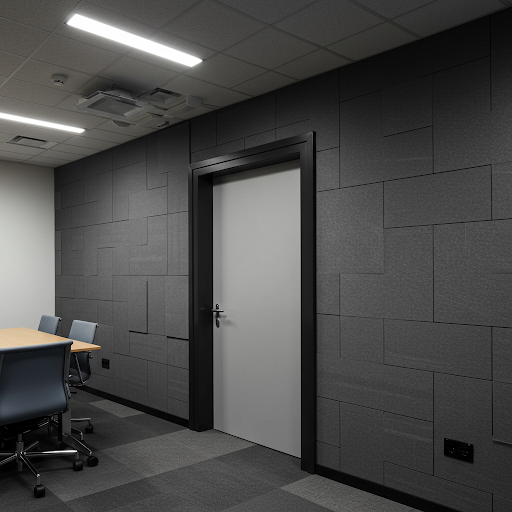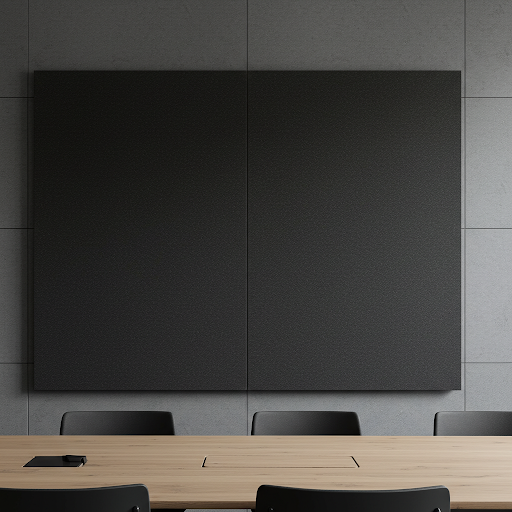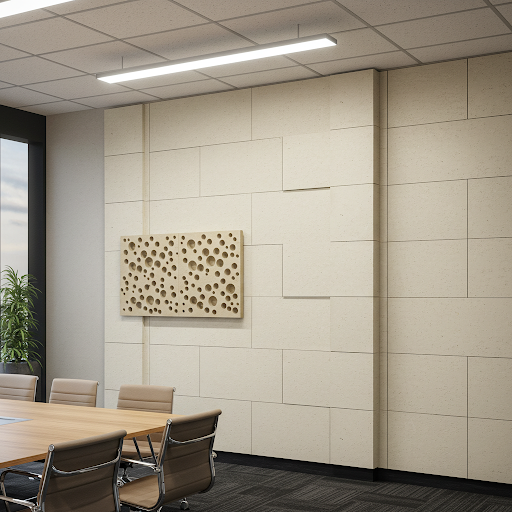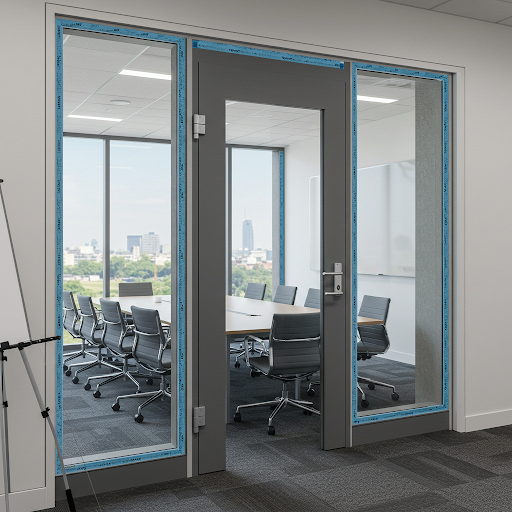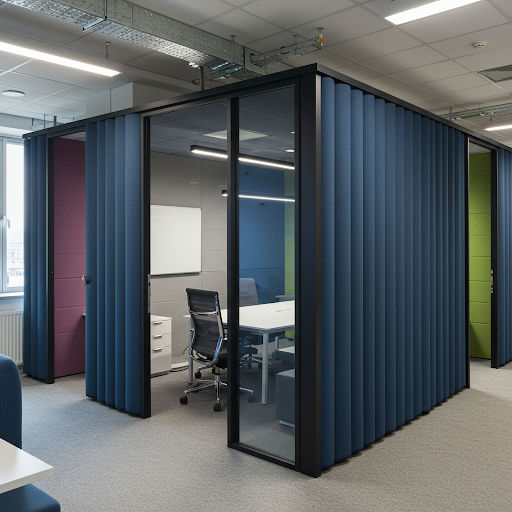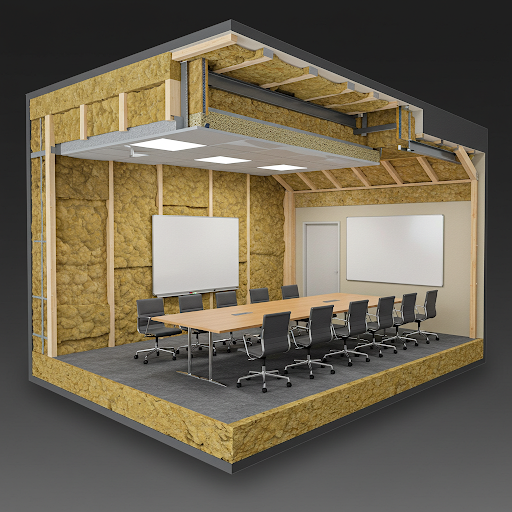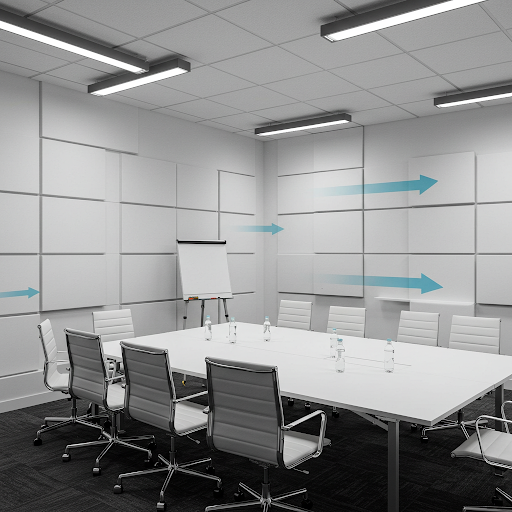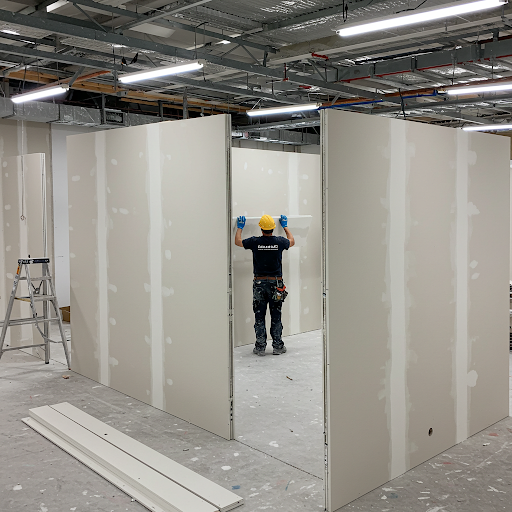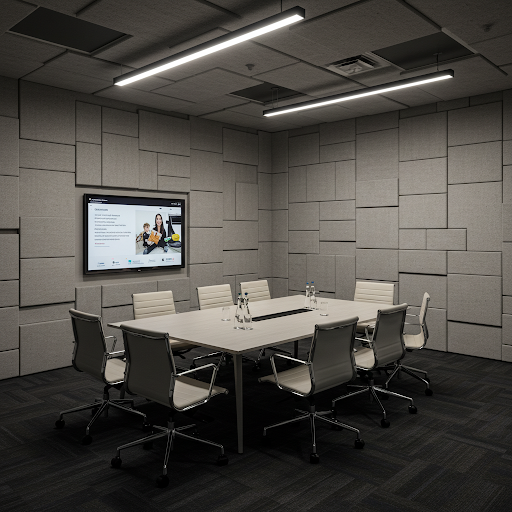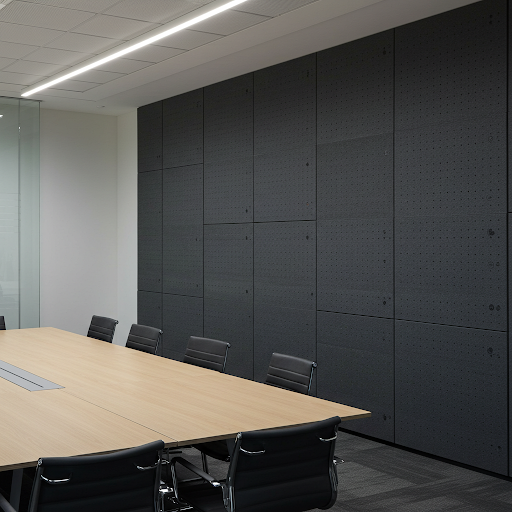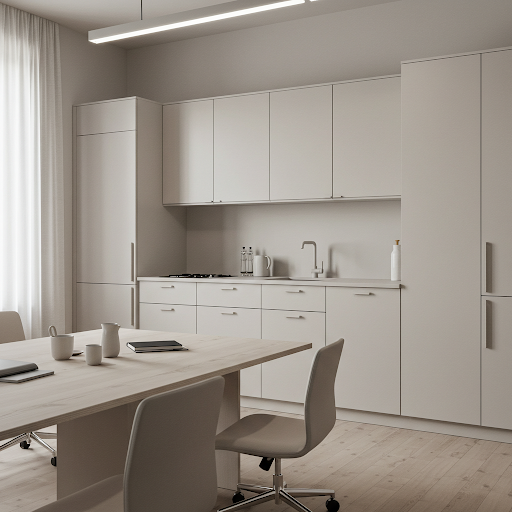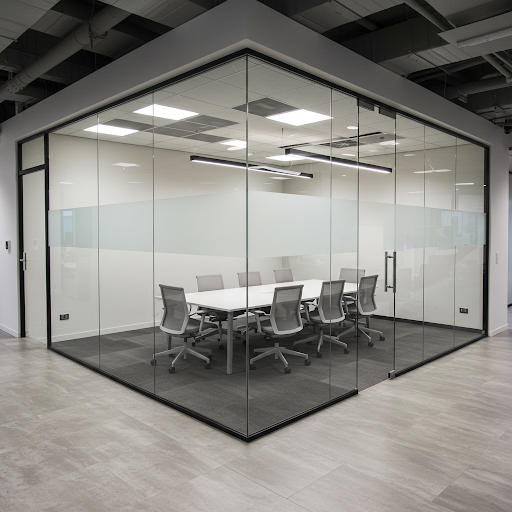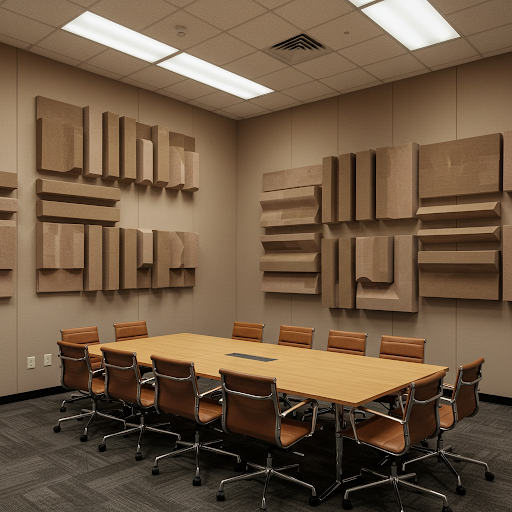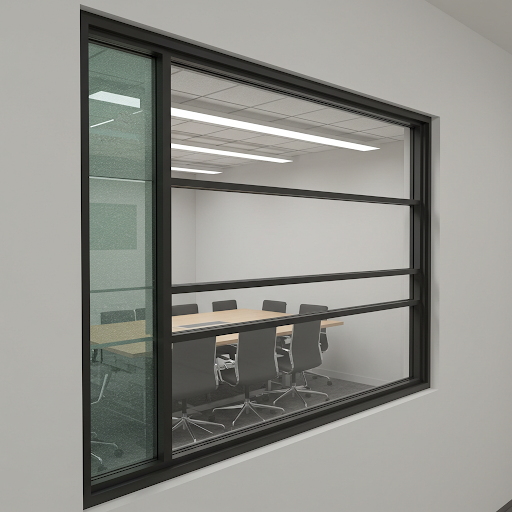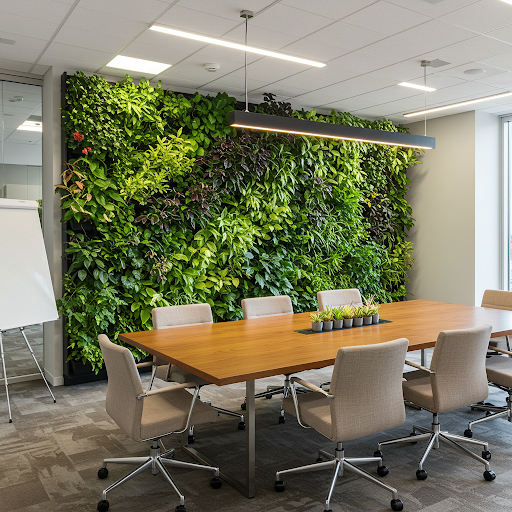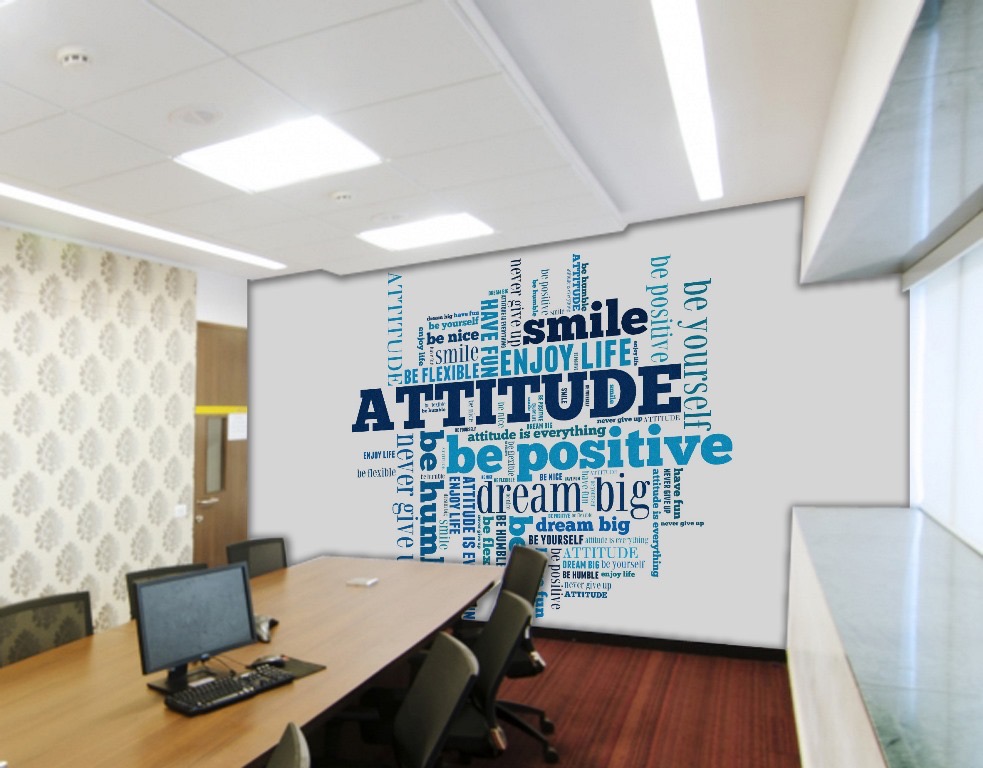Description
All types of conference room partitioning aim to divide space, provide privacy, and control acoustics. They offer flexibility for multi-functional use, enhance space optimization, and can be chosen to complement aesthetics. Their core purpose is to create adaptable and effective meeting environments.
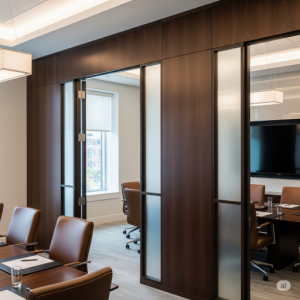
Types of Conference Room Partitions
Movable/Operable Walls
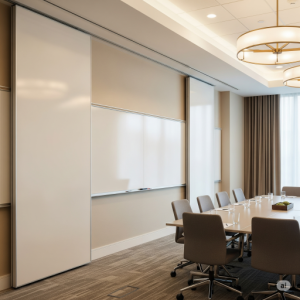
These are perhaps the most common and versatile. Movable walls consist of individual panels that can slide along a track system, stacking neatly away when not in use to open up the space. They come in various finishes like wood, fabric, glass, or even custom options to match your decor. These are designed for flexibility and can be easily reconfigured.
Sliding Partitions
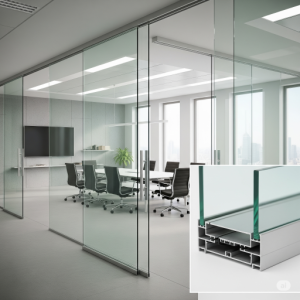
Sliding glass dividers are a popular choice for contemporary conference rooms, offering a sophisticated aesthetic and practical functionality. Their transparency allows for the unimpeded flow of natural light, creating bright and inviting spaces, even when divided. While providing clear visual separation, they maintain an open and connected feel within the office. For moments requiring privacy, various glass treatments like frosting, tinting, or innovative switchable glass (which turns opaque at the flick of a switch) can be incorporated, offering on-demand seclusion without sacrificing the benefits of natural light. This versatility makes them ideal for dynamic work environments.
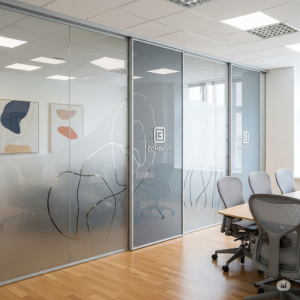
Folding Partitions (Accordion Walls)
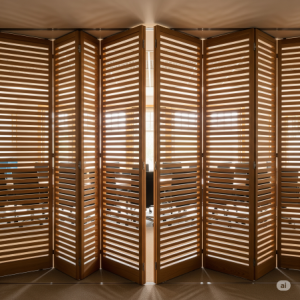
Folding partitions, or accordion walls, offer rapid room reconfiguration. Their panels neatly fold and stack in an “accordion” style, making them perfect for quickly dividing large spaces into smaller meeting areas or opening them up for larger gatherings, adapting effortlessly to changing needs.
Portable Partitions/Mobile Partitions
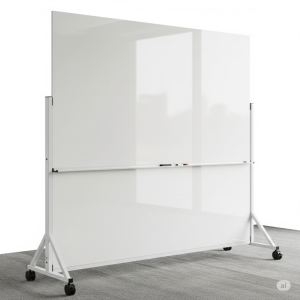
Portable or mobile partitions, often on wheels, provide flexible and temporary conference room divisions. They are easily moved, reconfigured, and stored, making them ideal for dynamic spaces requiring quick layout changes.
Demountable Walls
Demountable walls, also known as modular or relocatable partitions, offer a more permanent yet flexible alternative to mobile partitions. Designed for repeated assembly and disassembly without damage, they are robust, full-height systems ideal for creating private offices or meeting rooms. They offer excellent acoustic performance and can be customized with various finishes, supporting evolving spatial needs with minimal disruption.
Unitized Wall Systems
Conference room unitized wall systems utilize prefabricated panels for efficient assembly. These modular components are ideal for spaces requiring frequent reconfigurations, offering quick installation and minimal disruption. They provide a sleek, modern aesthetic and can often integrate technology and offer sound control.
Modular Systems
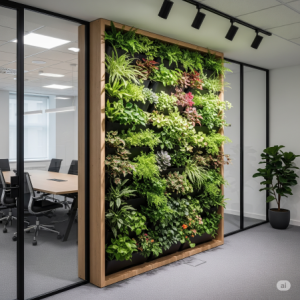
Conference room modular partition systems offer extensive customization in size, materials, and design, enabling unique aesthetics and functionality. They typically require on-site labor for assembly, fitting components into the specific space. While installation may take longer than unitized systems, their adaptability makes them ideal for creating tailored and evolving conference environments.
Pocket Walls
Pocket walls are an elegant solution for conference rooms, as they slide seamlessly into a recessed cavity within the adjacent wall. This allows the partition to completely disappear when not in use, maximizing open space and offering ultimate flexibility for multi-functional areas, while maintaining a clean, unobstructed aesthetic.
Fixed Walls
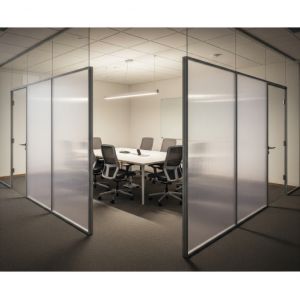
Fixed conference room partitions provide robust, permanent space division, offering superior sound insulation compared to their movable counterparts. Designed for lasting separation, they are ideal for areas requiring consistent privacy and minimal noise transfer, such as executive boardrooms or quiet zones for focused work. Materials like double-glazed glass, solid wood, or insulated drywall ensure excellent acoustic performance. Although they lack the reconfigurability of operable walls, their stability and enhanced soundproofing make them a preferred choice for creating dedicated, distraction-free environments within an office layout. They represent a more architectural approach to space planning, integrating seamlessly into the building’s permanent structure.
Full-Height Partitions (Floor-to-Ceiling)
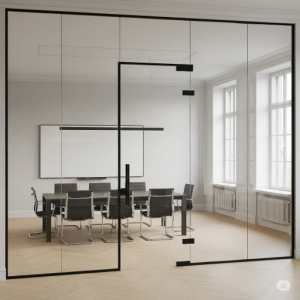
Provide maximum privacy and sound reduction.
Half-Height Partitions
Offer some separation while maintaining an open feel.
Materials Used for Conference Room Partitions
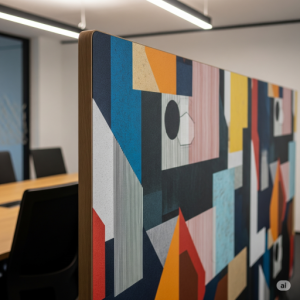
The selection of materials for conference room partitions significantly impacts their aesthetics, acoustic performance, durability, and overall cost.
Glass Conference Room Partitions
Clear Glass
Clear glass partitions are favored for their ability to maximize natural light flow throughout a space, creating a brighter, more open, and inviting atmosphere. They foster visual connectivity and a modern aesthetic, making a conference room feel less enclosed while promoting transparency.
Frosted/Tinted Glass
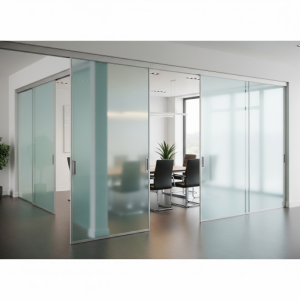
Frosted or tinted glass partitions provide an excellent balance of privacy and light. While obscuring clear views into a conference room, they still allow natural light to filter through, maintaining an open feel and reducing the need for artificial lighting, ideal for focused discussions without feeling completely cut off.
Laminated Glass
Laminated glass enhances both safety and sound reduction for conference room partitions. Constructed with an interlayer (often PVB) between glass panes, it holds fragments together upon impact, preventing dangerous shattering. This interlayer also dampens sound waves, significantly improving acoustic privacy, crucial for confidential meetings.
Double-Glazed Glass
Double-glazed glass partitions are exceptionally effective for soundproofing. The air gap between two panes of glass creates an acoustic barrier, significantly reducing sound transmission and enhancing privacy within conference rooms. This makes them ideal for sensitive discussions or areas where noise reduction is paramount.
Switchable Glass
Switchable glass, also known as smart glass, revolutionizes conference room privacy. With an electrical current, it instantly transitions from transparent to opaque, providing on-demand seclusion for sensitive discussions. When transparency is desired, simply switch off the current, allowing natural light and an open feel to return.
Acoustic Glass
Acoustic glass is engineered to significantly reduce sound transmission. It often features specialized interlayers (like PVB) between glass panes that absorb sound vibrations, preventing noise from penetrating the glass. This technology creates quieter conference rooms, crucial for privacy and focus, making it ideal for busy office environments.
Wood Conference Room Partitions
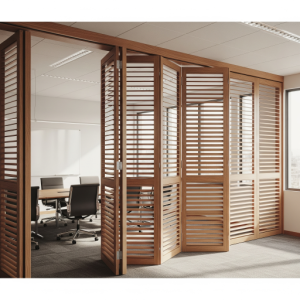
Wood conference room partitions offer a classic and warm aesthetic, bringing a sense of natural elegance to any meeting space. They can range from solid, sound-dampening panels for maximum privacy to intricate slatted or perforated designs that allow for light flow while still defining areas. Available in various finishes and wood types, they can complement diverse interior designs, from traditional to modern. Many wooden partitions are also designed for acoustic performance, minimizing noise transfer for focused discussions. They can be fixed, sliding, folding, or even demountable, offering flexibility in configuring the space as needed.
Solid Wood
Offers a warm, classic, and high-end appeal.
Veneer
Provides the look of solid wood at a lower cost.
Plywood
A more affordable wood option.
Wooden Panels/Slats
It can create visual interest and allow some light/airflow.
Metal Conference Room Partitions
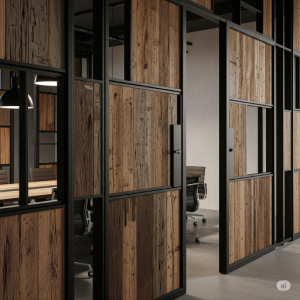
Metal conference room partitions offer a sleek, modern, and often industrial aesthetic. They are highly durable and long-lasting, resisting warping, cracks, and fading. These partitions can incorporate various materials, most commonly glass within metal frames (steel or aluminum) to allow light penetration while providing acoustic separation. Options include solid metal panels for maximum privacy and soundproofing, or perforated/mesh designs for a more open feel.
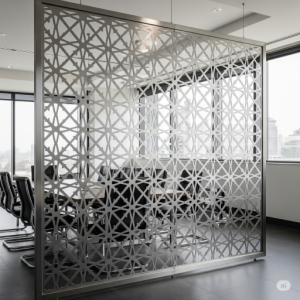
Metal partitions are also highly customizable in terms of finish (powder-coated, brushed, polished), color, and design, including intricate laser-cut patterns. They are easy to maintain and clean, making them a practical choice for high-traffic commercial environments. Whether used as fixed, demountable, sliding, or folding systems, metal partitions provide a robust and contemporary solution for defining and enhancing conference room spaces.
Aluminum
Lightweight, corrosion-resistant, and ideal for sleek, modern designs (often used for frames).
Steel
Offers superior strength and durability, often seen in industrial styles.
Fabric Conference Room Partitions
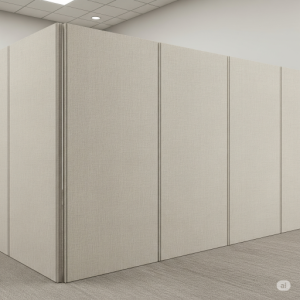
Fabric conference room partitions offer a versatile and aesthetically pleasing solution for space division. Primarily valued for their excellent acoustic properties, they effectively absorb sound, reducing echo and improving speech clarity within the meeting area, which is crucial for productive discussions and maintaining privacy.
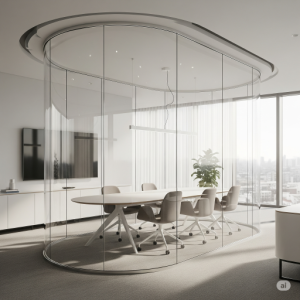
Beyond functionality, fabric partitions provide a softer, warmer aesthetic compared to metal or glass. They come in a vast array of colors, textures, and patterns, allowing for significant customization to match existing décor or create a specific mood. Many are lightweight and portable, making them easy to reconfigure for different meeting layouts or temporary needs. They can also serve as tackable surfaces for presentations or displays.
Acoustic Panels
Acoustic panels are specialized sound-absorbing materials, often made of fiberglass, mineral wool, or foam, and typically covered in a decorative fabric. Their primary purpose is to control sound reflections within a space, reducing echo and reverberation. This improves speech intelligibility and overall sound clarity, creating a quieter and more productive environment, especially crucial for conference rooms.
Upholstered Dividers
Upholstered dividers enhance conference rooms with softness and texture, contributing to a more comfortable and visually appealing environment. Available in a vast array of colors and patterns, they offer significant design flexibility while also providing some acoustic dampening.
Curtains
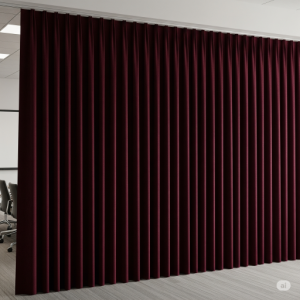
Curtains offer a simple, cost-effective, and highly versatile solution for temporary visual separation in conference rooms. They are easily installed and retracted, providing instant privacy or openness as needed. Available in a wide range of fabrics, colors, and opacities, they can also contribute to the aesthetic appeal and offer some acoustic dampening, though primarily serving visual division.
Canvas
Canvas partitions are an economical and highly portable option for temporary conference room divisions. Lightweight and easy to move or store, they offer quick visual separation. While not providing significant acoustic privacy, they are ideal for flexible spaces needing adaptable, budget-friendly solutions.
Composite Materials
Composite materials for conference room partitions combine two or more distinct substances to achieve enhanced properties. Examples include combining wood with plastic (WPC), or metal with honeycomb cores. These partitions often offer a blend of benefits like improved acoustics, lightweight design, durability, and a wide range of aesthetic finishes, making them versatile for modern meeting spaces.
Laminate
Durable, easy to clean, and stain-resistant.
MDF (Medium-Density Fiberboard)
A common base for many finishes.
Gypsum Board (Drywall/Plasterboard)
Affordable, easy to install, and offers good fire resistance. Can be combined with insulation for improved acoustics.
PVC
Offers versatility and can be easily customized.
Polycarbonate
Translucent panels with good light transmission and sound insulation.
Benefits of Conference Room Partitioning
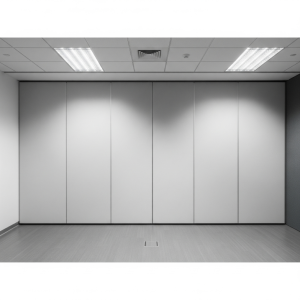
Flexibility and Efficiency
In Nairobi’s dynamic business environment, conference room partitioning excels in providing unparalleled flexibility and efficiency. Businesses can swiftly reconfigure expansive spaces into multiple, smaller meeting rooms for intimate discussions, dedicated training areas for skill development, or versatile breakout zones for collaborative sessions. This adaptability allows companies to optimize their existing footprint, accommodating diverse group sizes and purposes throughout the day. It ensures that meeting facilities are always perfectly suited to the task at hand, maximizing utilization and boosting operational efficiency, a key advantage for any growing enterprise in Kenya.
Enhanced Privacy and Sound Control
One of the most crucial benefits of conference room partitioning, especially with movable walls, is the significantly enhanced privacy and sound control they provide. In Nairobi’s increasingly open-plan office environments, noise can be a major distraction. Partitions with good acoustic ratings (high STC values) effectively absorb and block sound waves, preventing conversations from carrying between meeting spaces or spilling into general work areas. This creates confidential zones essential for sensitive discussions and focused collaboration. By minimizing noise transfer, these partitions foster a more productive and private atmosphere, reducing distractions and improving overall office harmony.
Cost-Effectiveness
More affordable and less disruptive than traditional construction for dividing space. They save on long-term reconfiguration costs.
Space Optimization
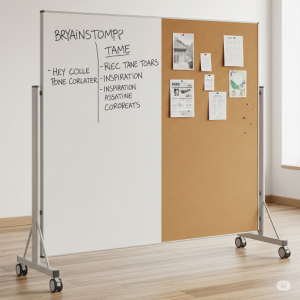
Conference room partitioning is a game-changer for space optimization, particularly vital in Nairobi’s often compact office spaces. By allowing a single large room to be swiftly divided into multiple smaller, private areas, businesses can significantly enhance the utility of their existing footprint. This means an office with limited square footage can simultaneously host a large presentation, a confidential one-on-one meeting, and a small team breakout session. This dynamic adaptability prevents the need for costly expansions or additional leases, ensuring every square meter is efficiently utilized to meet diverse operational needs throughout the day.
Aesthetics
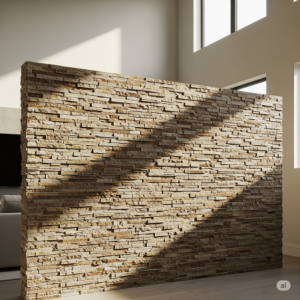
Beyond mere functionality, the aesthetics of conference room partitioning offer significant benefits for offices in Nairobi. Modern partitioning solutions are designed to be an integral part of the interior décor, available in diverse materials like sleek glass, warm wood, or contemporary laminates. This wide array of finishes ensures seamless integration with the existing office design, enhancing its overall sophistication. Glass partitions, in particular, are favored for their ability to maintain an open and airy feel, allowing natural light to permeate while still clearly defining separate meeting zones. This balance of transparency and division contributes to a more inviting and visually appealing workspace.
Natural Light Integration
Many partition systems, especially glass ones, allow natural light to penetrate deeper into the building, creating brighter and more inviting spaces.
Clean and Fast Installation
Demountable walls, in particular, produce less dust and disruption during installation compared to drywall construction.
Acoustics in Conference Room Partitioning
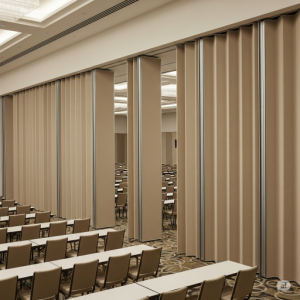
Acoustics are paramount in conference room partitioning, especially in dynamic office environments like those found in Nairobi. Effective sound management ensures privacy, reduces distractions, and promotes clear communication, ultimately contributing to more productive meetings.
Here’s why acoustics are critical and what to consider:
1. Speech Privacy and Confidentiality
For business discussions, especially those involving sensitive information, sound leakage is a major concern. Well-designed partitions prevent conversations from being easily overheard by those outside the room. This is achieved by creating a barrier that significantly reduces airborne sound transmission.
2. Reducing Distractions
In open-plan offices, noise from adjacent workstations, other meetings, or general office activity can severely disrupt concentration. Acoustic partitions block or absorb these external sounds, creating a quieter, more focused environment within the conference room.
3. Enhancing Speech Intelligibility
Within the conference room itself, good acoustics prevent excessive echo and reverberation, which can make it difficult to hear and understand speakers. Materials that absorb sound help to “deaden” the room, leading to clearer audio for in-person discussions and video conferences.

